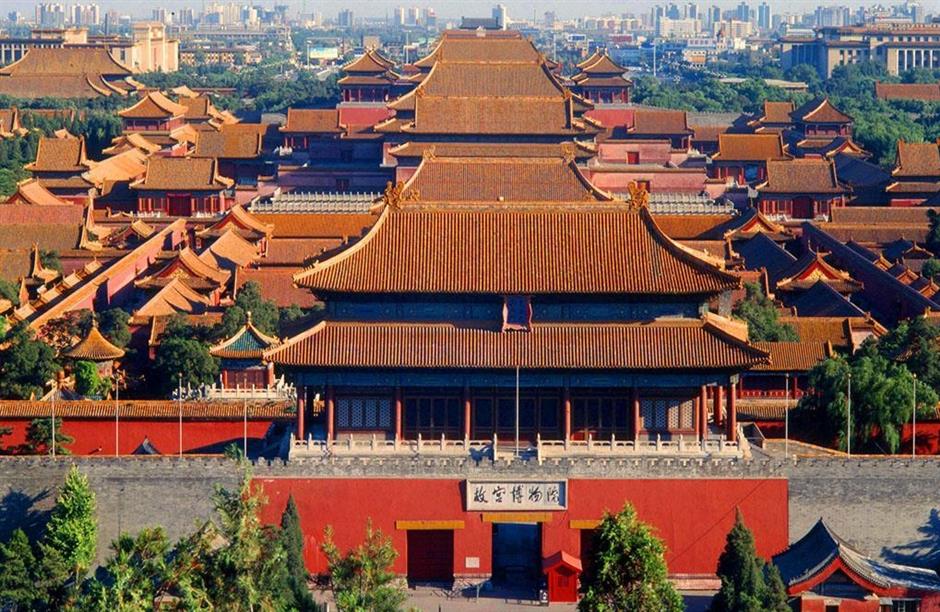No visitor wants to miss these famous heritage sites in Beijing

The Great Wall
Year of heritage inscription: 1987
The Great Wall stretches through 15 provinces and autonomous regions of China.
The part of the wall in Beijing is the most-visited. For a long time, people regarded climbing the Great Wall as a symbol of valor and courage. One saying went: “One who fails to reach the Great Wall is not a hero.”
The popular conception that the Great Wall is the only manmade feature on Earth that can be seen with the naked eye from outer space has been proven untrue.
The Great Wall is still regarded as one of the greatest achievements of mankind. Its construction began during the West Han Dynasty (1100-771 BC) and Qin Dynasty (221-207 BC), but those sections are now mostly in ruins.
The Juyong Pass and Jiayu Pass sections of the Great Wall in Beijing were built during the Ming Dynasty (1368-1644).
How to get there: There are tourism buses at Tian’anmen Square going to the Badaling Great Wall. Bus No. 919 at Deshengmen also reaches the area.

The Palace Museum
Year of heritage inscription: 1987
The Palace Museum tops the list of every visitor going to Beijing. It served as the imperial palace for two dynasties in China.
Though visitors always remark on the vastness of the Forbidden City, the most they ever get to see is the 65 percent open to the public. Many of the closed parts included halls that imprisoned concubines, handmaidens and eunuchs.
Many areas of the palace were used as warehouses to store cultural relics or as offices for staff members. New areas have been opened to the public in recent years, including the Hall of Consolation of Mothers, where empress dowagers usually lived. Officials said more areas will be opened in the future.
How to get there: Take Metro Line 1 to the Tian’anmen East Station.

The Summer Palace
Year of heritage inscription: 1998
The Summer Palace reveals two sides of the end of the feudal rule: craftsmanship and corruption.
First built during the reign of Qianlong Emperor (1711-99), the palace was called Qingyi Garden. The general layout was designed by the Italian imperial architect Giuseppe Castiglione (1688-1766).
The garden was dedicated to the emperor’s mother. The imperial family back then was very fond of the garden style of the Yangtze River Delta region, which is replicated in the garden.
The garden occupies nearly 3 square kilometers, with more than 3,000 buildings. The architect and craftsmanship of the garden were certainly top class in the country.
About two centuries later, the Qing Dynasty (1644-1911) reached its terminal phase. The country suffered from economic collapse and foreign invasion. In 1860, the garden was set alight by the French and British allied force. The imperial family spent huge sums rebuilding it after the fire. In 1888, it was renamed Yihe Garden.
It subsequently became the retirement residence of Empress Dowager Cixi (1835-1908).
In 1900, the garden was again damaged by the eight-nation alliance, and Cixi spent a massive amount to restore it. A decade later, China’s last dynasty collapsed.
The Summer Palace today is a stunning visual reminder of China’s imperial past.
How to get there: Take Metro Line 4 to the Beigongmen Station.

The Temple of Heaven
Year of heritage inscription: 1998
In 1420, a year before Ming Dynasty Emperor Yongle relocated the capital city from Nanjing to Beijing, he decided to build a sacrificial temple in Beijing. Originally the temple was to worship both Heaven and Earth, but the Temple of Earth built in 1530 was later renamed Temple of Heaven.
It is divided into interior and exterior sections. The walls around the temple have two circular corners on the northern side and two square ones on the southern side, indicating the concept of “round Heaven and square Earth,” which expressed the view of ancients.
The Hall of Prayer for Good Harvest is the most significant building in the temple. The earliest construction in the temple, it was destroyed in a fire caused by lightning in 1889. Several years later, it was rebuilt to its original state.
How to get there: Take Metro Line 5 to the Tiantandongmen Station.

Grand Canal of China
Year of heritage inscription: 2014
The Grand Canal, or Beijing-Hangzhou Grand Canal, took centuries in construction. The Beijing section was built during the Sui Dynasty (AD 581-618) and was originally named Yongji Canal.
More than 10,000 workers were forced to build the canal, with women recruited if there weren’t enough men available.
After the Yongji Canal was built, Emperor Suiyang (AD 569-618) journeyed from the capital city of Chang’an — today’s Xi’an in Shaanxi Province — to Beijing by ship. He was surprised that the journey, including the land-route section, took him only about 50 days.
The canal, however, also caused flooding several times in ensuing centuries. In the late 19th century, the canal finally to be a shipping lane and became part of a flood control system.
















